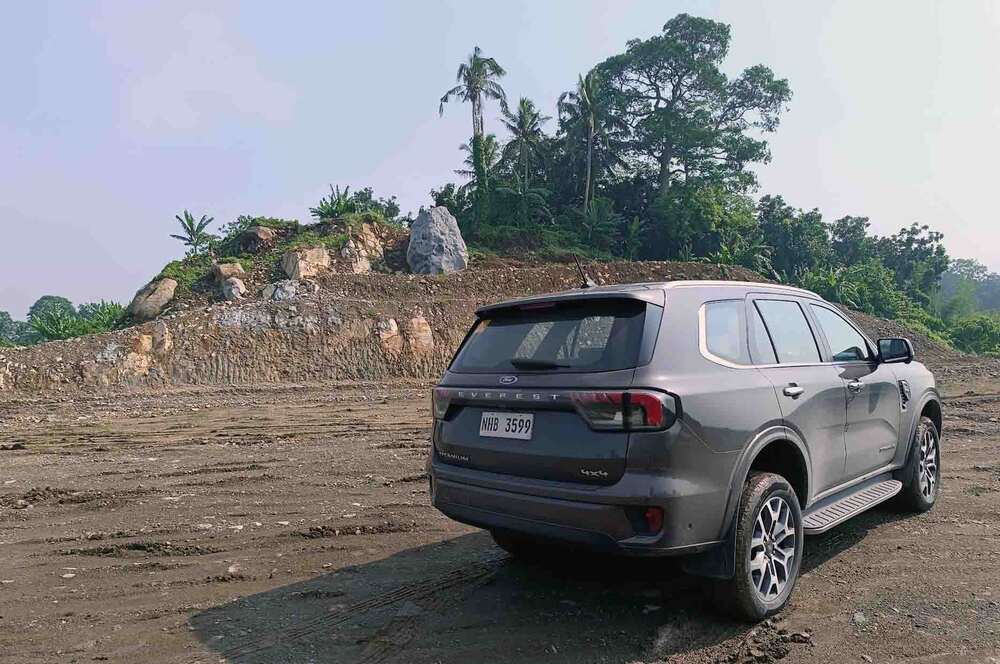THE Ford Everest isn’t your average SUV. It’s not content with just navigating school drop-offs and grocery runs. No, the Everest is like Kami Rita Sherpa, the legendary Nepalese mountaineer who has summited Mount Everest a record-breaking 24 times. Both the Everest and Kami Rita exude a quiet strength, a sense of unwavering determination that allows them to conquer any challenge, big or small.
Built to Endure, Like a Seasoned Climber
Kami Rita’s weathered face and calloused hands speak volumes about his years spent battling the unforgiving slopes of Everest. Similarly, the Everest’s design reflects its rugged capabilities. The squared-off body and imposing stance leave no doubt about its off-road prowess. Its lineage can be traced back to the Ford Ranger pickup truck, a workhorse known for its ability to handle the toughest terrains. Just like Kami Rita’s trusty ice axe and crampons, the Everest is equipped with the necessary tools to conquer any path, be it a snowy mountain pass or a pothole-ridden dirt roads along the SLEX TR-4 extension.

Power with Nuance, Like a Measured Climber
Kami Rita’s ascents of Everest aren’t about reckless speed; they’re about calculated steps and a deep understanding of his own limitations. The Everest mirrors this approach. Under the hood lies a 2.0L bi-turbo diesel engine, a powerhouse that puts out 210 horsepower and a staggering 500 Nm of torque. On paper, it appears to be a beast, ready to charge up any incline. However, in the real world, the power delivery is more nuanced. It offers a strong initial pull, but then plateaus, prioritizing controlled power over sheer speed. This controlled power is akin to Kami Rita’s measured pace on the mountain — efficient and deliberate, ensuring he reaches the summit without burning himself out.
Surprisingly Nimble for its Size, Like a Graceful Climber
Despite its imposing size, the Everest handles surprisingly well. The suspension, with its long travel and wider tracks, absorbs bumps and dips in the road with ease. The steering, while lacking the feedback of a sports car, is precise enough to inspire confidence when navigating tight corners. Much like Kami Rita’s years of experience have honed his ability to navigate treacherous icefalls and narrow ridges with remarkable agility, the Everest defies expectations of a large SUV, maneuvering through tight city streets with surprising grace.
Fuel Efficiency: A Necessary Compromise
One area where the Everest falls short of perfection is fuel efficiency. Just like Kami Rita has to carefully ration his supplies on long climbs, the Everest demands a bit more frequent fill-ups, especially in city driving. However, the large 80-liter fuel tank provides some buffer, offering peace of mind on long journeys. It’s a necessary compromise for the immense power and capability the Everest offers.
Spacious Second Row, Third Row Needs Planning
The second row of the Everest is a haven, just like Base Camp at the foot of Everest. It’s a spacious haven for families, offering ample legroom and headroom for three adults to sit comfortably. This allows for quality time, shared stories, and even impromptu movie marathons on long journeys. The third row, however, is like the treacherous Khumbu Icefall — usable but requiring careful planning. While it can accommodate passengers for short trips, taller individuals might find it cramped. Getting in and out requires a bit of contortion, a reminder that even the most well-equipped expeditions sometimes require a bit of sacrifice for the bigger goal.
Tech Packed for Efficiency, But Not Without Quirks
The Everest comes loaded with technology, a modern marvel compared to the basic compasses and maps used by early Everest expeditions. A giant 12-inch touchscreen serves as the command center, while a digital instrument cluster displays all the necessary information. The system is designed for ease of use, with most menus being just a tap or two away. However, just like the occasional unpredictable weather conditions on Everest, the system can be frustrating at times. The gear lever design, for instance, can be confusing, leading to missed shifts. Thankfully, physical buttons for climate control and volume provide a welcome backup. These minor quirks are akin to the occasional equipment malfunction that Kami Rita might encounter on his climbs — frustrating but manageable with a bit of experience and ingenuity.

More Than Just a Vehicle, It’s a Companion
The Ford Everest isn’t just a car; it’s a companion for life’s adventures, big and small. It’s a vehicle that inspires you to explore, to push boundaries, and to create memories that will last a lifetime. Just like Kami Rita Sherpa. -with Deriq T. Bernard




